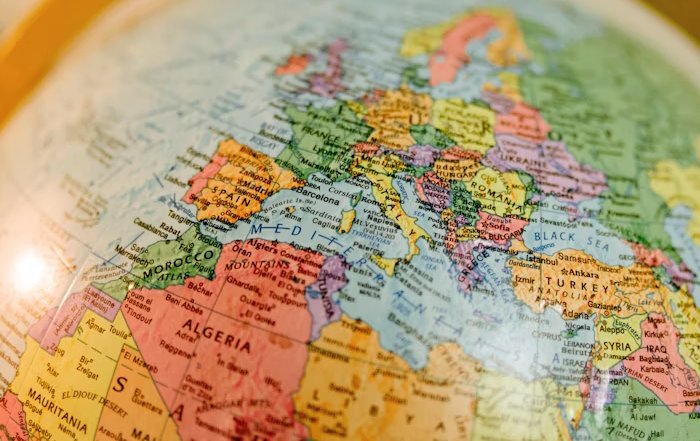As the world continues its transition toward automation, artificial intelligence, and sustainable innovation, Australia and Canada stand out as two of the most dynamic labor markets undergoing profound transformation. By 2025, these nations have emerged as testing grounds for balancing economic growth with social stability, where skills, adaptability, and digital fluency define the future of work. Both countries, though geographically distant, share parallel economic narratives shaped by their rich resource sectors, advanced education systems, and forward-thinking policies on immigration and technology integration.
The modern workforce in these countries is not merely adapting to new technologies; it is being redefined by them. A convergence of automation, artificial intelligence, and green economy initiatives has accelerated the shift from traditional industries toward high-skill, knowledge-based sectors. This shift underscores the growing need for workers capable of bridging digital innovation with sustainable business models—an area where Australia and Canada are increasingly aligning with global trends. Governments, corporations, and educational institutions are investing heavily in reskilling programs to meet the needs of a fast-changing employment ecosystem, marking a new era of digital competitiveness and workforce resilience.
Learn more about global employment transitions at UpBizInfo Employment.
Technology as the Core Driver of Workforce Evolution
In both Australia and Canada, the impact of technology on labor markets cannot be overstated. Artificial intelligence and automation are transforming industries from banking and logistics to healthcare and mining. In Australia, companies such as BHP and Rio Tinto have pioneered autonomous mining operations, integrating remote systems and robotics to improve efficiency and safety. Similarly, Canada’s resource-driven provinces like Alberta and British Columbia are implementing AI-based monitoring and predictive analytics to optimize energy output and reduce environmental impact.
The integration of digital tools extends far beyond industrial sectors. The adoption of AI in healthcare, blockchain in financial services, and data analytics in marketing has created a demand for hybrid professionals who understand both technology and business strategy. Organizations like Deloitte and PwC in both nations have reported a surge in corporate investment in upskilling initiatives, aimed at preparing their workforce for digital transformation. These efforts are bolstered by universities and technical institutes launching programs that emphasize data literacy, cybersecurity, and sustainable innovation.
Explore deeper insights into AI integration at UpBizInfo AI.
Meanwhile, according to LinkedIn’s Global Skills Report 2025, digital literacy, machine learning, and cybersecurity remain among the top ten in-demand skills across both economies. Workers in traditional fields are increasingly expected to complement their roles with digital competencies. For example, financial analysts are now expected to understand algorithmic trading models, while marketing professionals must leverage data-driven tools to interpret customer behavior in real time. This growing expectation is fueling a new wave of lifelong learning—one where skills have shorter lifespans and continuous education becomes an economic necessity.
The Role of Education and Reskilling Programs
Education systems in both Australia and Canada have been central to managing this workforce transformation. Governments have launched targeted initiatives to align vocational and higher education curricula with industry demands. Australia’s National Skills Agreement, launched in late 2024, emphasizes technical training in green energy, cybersecurity, and healthcare services. Similarly, Canada’s Future Skills Centre, supported by the federal government, focuses on equipping workers with the adaptive skills needed in data science, AI ethics, and advanced manufacturing.
In both countries, universities are forming stronger collaborations with private enterprises to create skill pipelines tailored to emerging sectors. The University of Toronto, for example, offers joint programs in AI and policy studies, while RMIT University in Melbourne has introduced degree pathways combining sustainability with technology innovation. These cross-disciplinary models demonstrate a pragmatic understanding that the future of work depends not only on technical expertise but also on creativity, empathy, and strategic thinking—qualities machines cannot easily replicate.
For ongoing coverage of education and innovation, visit UpBizInfo Business.
Digital transformation has also prompted a re-evaluation of remote and hybrid learning models. The pandemic accelerated virtual education technologies, and both nations have continued to expand their digital learning infrastructure. Government-backed platforms like TAFE Digital in Australia and eCampusOntario in Canada provide flexible, accessible reskilling opportunities that allow mid-career professionals to pivot without leaving the workforce. These initiatives underscore a broader shift toward lifelong learning as an integral part of national competitiveness.
The Influence of Immigration and Global Talent Mobility
A defining strength of both Australia and Canada lies in their immigration policies. Unlike many economies facing demographic stagnation, these countries have embraced immigration as a strategy for workforce sustainability. In 2025, Canada continues to target over 450,000 new immigrants annually, with a strong focus on highly skilled professionals in technology, healthcare, and engineering. Similarly, Australia’s Skilled Migration Program remains a cornerstone of its economic strategy, prioritizing sectors like data analytics, renewable energy, and advanced construction.
These policies not only fill immediate labor gaps but also bring in cultural diversity that enhances innovation. According to research by OECD, diverse teams consistently outperform homogeneous ones in problem-solving and creative tasks—a fact recognized by both governments in shaping their workforce policies. Additionally, new digital visa categories, such as Canada’s Tech Talent Strategy and Australia’s Global Talent Visa Program, are designed to attract experts in AI, cybersecurity, and sustainability who can drive long-term economic transformation.
Learn more about international business migration at UpBizInfo World.
The integration of foreign expertise into domestic industries also accelerates the adoption of global best practices. Many skilled immigrants bring entrepreneurial experience, contributing to startup ecosystems in cities like Toronto, Vancouver, Sydney, and Melbourne. These hubs are increasingly connected to international innovation networks, fostering collaboration with companies such as Microsoft, IBM, and Google, which maintain regional research centers that focus on applied AI and digital health solutions.
The Green Economy and Sustainability-Driven Employment
Sustainability has emerged as a powerful driver of new job creation in both Australia and Canada. As global climate targets tighten under frameworks like the Paris Agreement, industries are rapidly reorienting toward low-carbon operations. In Australia, large-scale investments in solar and wind projects across Queensland and South Australia have spurred demand for engineers, environmental scientists, and energy analysts. The Clean Energy Council projects that renewable energy could support more than 60,000 direct jobs by 2030, with many of those roles requiring retraining from traditional mining sectors.
Canada’s approach mirrors this transition, particularly through its 2030 Emissions Reduction Plan, which aims to cut national emissions by 40–45% from 2005 levels. Green infrastructure investments, electric vehicle production, and circular economy initiatives are creating new employment streams in sustainable technology manufacturing and materials innovation. For instance, Hydro-Québec and Ballard Power Systems have expanded their R&D in hydrogen and battery technologies, signaling a long-term shift toward clean industrial ecosystems.
Discover more about sustainable business trends at UpBizInfo Sustainable.
At the same time, both governments are aligning workforce policies with climate objectives. This has led to the introduction of “just transition” programs that provide retraining and relocation assistance for workers moving from high-emission industries into renewable sectors. In regions dependent on fossil fuels, such as Western Australia or Alberta, these initiatives are vital to preventing structural unemployment while ensuring that communities remain economically viable. By embedding sustainability within labor policy, both nations are effectively linking job security with environmental responsibility—a strategy increasingly seen as a model for other economies navigating similar transitions.
Digital Workspaces and the Rise of Remote Careers
Remote work has become a defining feature of the new global workforce, and both Australia and Canada have adapted rapidly to this cultural and technological shift. The flexibility of digital work environments has expanded labor participation among previously underrepresented groups, including parents, rural workers, and people with disabilities. High-speed broadband investments through programs like Australia’s National Broadband Network (NBN) and Canada’s Universal Broadband Fund have reduced connectivity barriers, allowing professionals in remote areas to participate in global labor markets.
The expansion of the digital economy has also spawned an ecosystem of freelancers, consultants, and remote entrepreneurs. Platforms like Upwork and Fiverr, alongside regional equivalents, have become vital components of cross-border employment. Many professionals now manage hybrid portfolios, blending part-time remote contracts with local engagements, illustrating a shift toward decentralized work models that value autonomy and results over physical presence.
For further exploration of changing work environments, see UpBizInfo Technology.
However, the rise of remote work also presents challenges in regulation, taxation, and mental health management. Policymakers in both nations are now considering new frameworks for digital labor protection, ensuring that remote employees have access to benefits, fair pay, and training opportunities. Corporate culture is also evolving, with companies investing in digital collaboration tools such as Microsoft Teams, Slack, and Zoom, while prioritizing employee well-being through flexible hours and online wellness programs. The future of work is now inherently borderless—defined by skill relevance rather than geographic proximity.
AI-Driven Productivity and the Transformation of Labor Value
Artificial intelligence is redefining how productivity is measured and rewarded across Australian and Canadian industries. Unlike the industrial revolutions of the past, which were primarily driven by mechanization and energy advances, the current transformation is cognitive and data-centric. In 2025, both countries have integrated AI not only as a business tool but as a national asset, aligning economic policy with the capabilities of predictive analytics, natural language processing, and intelligent automation. The challenge, however, lies in ensuring that the gains from AI-driven productivity do not exacerbate inequality or displace vulnerable sectors of the labor force.
In Australia, the National Artificial Intelligence Centre (NAIC) has expanded its role in guiding ethical AI deployment, supporting enterprises in integrating AI safely into workflows. Industries such as healthcare, finance, and logistics have adopted AI to improve accuracy and reduce operational inefficiencies. For example, Commonwealth Bank of Australia (CBA) uses AI to enhance fraud detection and customer service personalization, while Woolworths employs machine learning to optimize supply chain logistics and demand forecasting. These applications have resulted in measurable increases in productivity, but they also emphasize the necessity of new governance structures around algorithmic transparency and workforce accountability.
Similarly, Canada’s Pan-Canadian AI Strategy, led by organizations like CIFAR and Vector Institute, continues to be one of the world’s most comprehensive national AI frameworks. Canadian enterprises such as Shopify and Royal Bank of Canada (RBC) are investing heavily in AI development to streamline operations and provide adaptive digital services. Yet, alongside this technological advancement, there is a growing emphasis on inclusivity in AI design. Ensuring that automation enhances, rather than replaces, human decision-making has become a central policy concern. Public-private partnerships are increasingly focused on retraining programs that enable workers to transition from repetitive administrative roles to analytical and strategic functions where human oversight remains irreplaceable.
Learn more about evolving AI trends in the economy at UpBizInfo AI.
The rise of AI has also reshaped the economic geography of work. Smaller cities such as Waterloo in Canada and Adelaide in Australia have evolved into thriving tech ecosystems, attracting startups that specialize in applied machine learning and automation tools. These cities are benefiting from a “talent spillover effect,” where universities, accelerators, and venture capital firms collaborate to cultivate innovation clusters that rival traditional economic centers like Toronto and Sydney. This decentralization of technology-driven employment demonstrates that the next stage of economic development may favor regional balance over urban concentration, a trend that both governments actively support through incentives and research grants.
Policy Innovation: Governments as Catalysts of the Future Workforce
The role of government policy in managing workforce transformation has become more strategic than ever. Australia and Canada have positioned themselves as early adopters of progressive labor policies that align economic competitiveness with social inclusion. This has required an unprecedented degree of coordination between ministries of labor, education, and technology to ensure coherence between workforce supply and demand.
In Australia, the federal government’s Jobs and Skills Australia (JSA) has launched a comprehensive data platform to monitor labor market trends in real time, allowing policymakers to predict emerging skill shortages before they become systemic. This predictive approach, supported by AI analytics, marks a departure from traditional reactive policymaking. JSA’s partnership with Australian Industry Standards (AIS) also ensures that educational programs remain dynamically aligned with industry expectations, particularly in advanced manufacturing, digital media, and healthcare.
Canada’s Employment and Social Development Canada (ESDC) has adopted a similarly data-driven model, integrating predictive analytics into national labor forecasts. The government’s “Future Ready” initiative, introduced in 2024, provides funding to provinces and territories for reskilling and micro-credential programs in areas such as digital transformation, green energy, and artificial intelligence. Moreover, Canada’s social safety net, including income support programs and reemployment assistance, has been modernized to accommodate short-term contract workers and gig economy professionals. This signals a recognition that the structure of employment itself has become fluid and decentralized.
Read more about the interplay of government and business policy at UpBizInfo Economy.
Both nations have also been global voices for responsible innovation. Their commitment to aligning technological advancement with ethical governance is reflected in the establishment of national AI ethics frameworks, data privacy regulations, and cross-border cooperation agreements. In particular, Australia’s Digital Economy Strategy 2030 and Canada’s Innovation and Skills Plan emphasize inclusion, transparency, and sustainability as guiding principles. These strategies have elevated both countries as models of digital governance for other advanced economies.
Labor Market Forecasts: The Next Decade of Transformation
Forecasts for the Australian and Canadian job markets in the decade leading to 2035 suggest a fundamental redefinition of employment categories. The OECD Employment Outlook 2025 indicates that up to 35% of existing jobs could undergo significant transformation rather than outright elimination. This means that automation will not necessarily replace human work but will reshape tasks within existing roles. Consequently, adaptability and upskilling will be key differentiators between individuals who thrive and those who struggle in the evolving economy.
In Australia, the greatest employment growth is expected in healthcare, clean energy, and digital services. The ageing population, coupled with sustainability commitments, is creating hybrid roles that combine medical expertise with technology management—such as health informatics and AI-assisted diagnostics. The renewable energy sector, driven by projects like the Sun Cable solar initiative, will also see a surge in technical roles, from project engineers to supply chain managers specializing in green logistics.
Canada’s job growth trajectory mirrors these patterns, with strong expansion anticipated in data science, biotechnology, and sustainable construction. As the nation continues to diversify away from its reliance on natural resources, demand for engineers, research scientists, and technology entrepreneurs is accelerating. The continued rise of Toronto’s tech corridor, now one of North America’s most vibrant innovation hubs, symbolizes this shift. Furthermore, the Canadian Digital Adoption Program (CDAP), introduced to help small businesses integrate digital tools, has become a catalyst for SME productivity and job creation across sectors.
Find more detailed coverage of job trends and employment insights at UpBizInfo Jobs.
Interestingly, while both countries share similar trajectories, Canada’s proximity to the U.S. market provides it with a unique strategic advantage in cross-border technology collaboration. Australian firms, by contrast, are leveraging their Asia-Pacific connections, establishing trade and technology partnerships with nations like Japan, Singapore, and South Korea. These regional alliances ensure that both nations remain deeply embedded within global innovation networks, balancing their geographic constraints with economic foresight.
🌏 Australia & Canada: Workforce 2025
Interactive Dashboard of Labor Market Transformation
Top In-Demand Skills 2025
The Human Element: Emotional Intelligence and Creativity in the New Economy
As automation accelerates, there is growing recognition that the most valuable human skills are those that machines cannot replicate. Emotional intelligence, creativity, leadership, and ethical reasoning are increasingly being integrated into job descriptions and performance metrics. Both Australia and Canada have invested in educational reforms that promote critical thinking, collaboration, and adaptability as core competencies for the future workforce.
Organizations such as EY and KPMG in both nations have implemented leadership development programs that emphasize empathy-driven management. Companies have discovered that teams led by emotionally intelligent leaders not only perform better but also adapt more effectively to disruption. In industries such as healthcare, education, and creative media, where interpersonal connection remains essential, these soft skills are the foundation of sustainable productivity.
This emphasis on human-centric competencies also aligns with broader well-being initiatives. Governments are recognizing that job satisfaction, mental health, and work-life balance are directly correlated with national productivity. Canada’s Right to Disconnect policies and Australia’s evolving employment standards underscore the importance of setting boundaries in an era of constant digital engagement. As remote work blurs the line between personal and professional life, emotional resilience has become as vital as technical proficiency.
For insights into workforce well-being and human capital management, visit UpBizInfo Employment.
At a cultural level, this human-centered approach is redefining success. Younger professionals in both nations increasingly prioritize purpose-driven careers that align with their personal values. This generational shift is influencing corporate behavior, prompting companies to adopt sustainability, inclusivity, and social responsibility as integral parts of their employer brand. The rise of “B-Corps” and ESG-certified businesses in both countries exemplifies this evolution, as profit is reimagined through the lens of shared prosperity and ethical impact.
Cross-Sector Innovation and the Growth of Entrepreneurial Ecosystems
Entrepreneurship has emerged as the lifeblood of modern labor markets in both Australia and Canada. The ability to identify new opportunities in changing economic conditions has never been more crucial. Startup ecosystems in Toronto, Montreal, Melbourne, and Brisbane are booming, driven by venture capital investment, government incentives, and growing collaboration between universities and the private sector.
In Canada, the Innovation Superclusters Initiative continues to foster high-impact collaboration among companies, researchers, and government agencies. These clusters, focusing on advanced manufacturing, digital technologies, and protein industries, are generating new employment opportunities and creating regional economic resilience. Australia’s CSIRO Innovation Fund (Main Sequence Ventures) serves a similar role, investing in deep-tech startups that bridge research with commercialization.
Learn more about innovation-led entrepreneurship at UpBizInfo Founders.
These ecosystems are particularly effective in supporting women entrepreneurs and underrepresented groups. Both countries have implemented diversity-focused innovation grants and incubator programs designed to reduce barriers to entry in tech-driven industries. The emphasis on inclusive innovation is not merely social—it is economic, as diverse leadership has been consistently linked to stronger performance, better problem-solving, and greater adaptability in fast-changing markets.
Moreover, the global nature of entrepreneurship today allows startups in these countries to scale internationally from inception. Access to global capital markets, digital marketing platforms, and remote talent pools gives small enterprises the capacity to compete alongside multinational corporations. By integrating AI-powered marketing tools and blockchain-based financial systems, startups are redefining efficiency and transparency, embodying the future of decentralized global business.
For further reading on entrepreneurial finance and digital business expansion, see UpBizInfo Investment.
Economic Inclusivity and the Role of Public-Private Partnerships
The transformation of labor markets in Australia and Canada is not just technological but structural. Public-private partnerships (PPPs) have become a cornerstone of national workforce strategies. Through collaboration between governments, corporations, and academia, these partnerships are creating skill pipelines that directly align with economic demand.
In Australia, programs like Skilling Australians Fund and Industry Growth Centres Initiative facilitate collaboration between businesses and educational providers to deliver job-ready training in high-demand sectors. Canada’s Workforce Development Agreements (WDAs) serve a similar function, enabling provinces to tailor labor programs to their specific regional economies. These partnerships are critical for addressing geographic disparities in employment and ensuring that rural and indigenous communities are not left behind in the digital transition.
Additionally, private sector leadership in social impact investment has begun to play an increasingly significant role. Companies such as Telstra, RBC, and Manulife are funding digital literacy initiatives that empower marginalized groups to participate in the modern economy. The result is an ecosystem where profit and purpose intersect, and where sustainable growth is measured not only by GDP but by societal well-being and equitable opportunity.
Discover related insights about business transformation at UpBizInfo Business.
Global Positioning and Strategic Workforce Competitiveness
As the global economy shifts toward digital and sustainable paradigms, both Australia and Canada have positioned themselves as models of advanced, inclusive, and forward-looking labor systems. Their workforce evolution strategies go beyond national boundaries, contributing to international competitiveness through trade, education, and innovation diplomacy. These nations’ reputations for transparency, ethical governance, and high quality of life have become key advantages in attracting global talent and investment in 2025 and beyond.
Australia’s geographic proximity to Asia has enabled it to become an important bridge between Western economies and fast-growing Asian markets. Through initiatives such as the Comprehensive and Progressive Agreement for Trans-Pacific Partnership (CPTPP) and deep partnerships with Japan, South Korea, and Singapore, Australia is leveraging its skilled workforce and stable political environment to secure long-term foreign investment in renewable energy, technology, and education. Meanwhile, Canada, as part of the United States-Mexico-Canada Agreement (USMCA), has strengthened its strategic position in North America’s integrated labor and technology ecosystem, enabling greater participation in supply chains linked to electric vehicle production, digital services, and sustainable manufacturing.
Read about global workforce positioning at UpBizInfo World.
In both nations, talent mobility is seen as the foundation of competitiveness. Highly skilled professionals in fields such as cybersecurity, healthcare technology, and climate engineering are increasingly sought after across borders. Australia’s Global Talent Independent (GTI) program and Canada’s Express Entry and Global Skills Strategy are designed to attract individuals who can drive innovation and entrepreneurship. This alignment of immigration policy with national workforce needs ensures that both economies remain flexible in a world where human capital has become the most valuable resource.
Equally significant is the rise of international collaboration in research and technology. Canadian AI institutions like Mila in Montreal and Vector Institute in Toronto are partnering with global research organizations to develop ethical AI standards and digital literacy programs, while Australian universities such as Monash and University of Sydney are leading research on the intersection of AI and sustainability. These collaborations not only elevate academic prestige but also shape practical, policy-level cooperation that translates innovation into employment growth and industrial competitiveness.
The Evolution of Sustainable Workforce Practices
Workforce sustainability in 2025 is no longer confined to job stability; it encompasses the broader social and environmental footprint of economic activity. Both Australia and Canada are pioneering “sustainable employment models” that align productivity with well-being, equality, and ecological responsibility. This paradigm shift represents a move away from short-term profit optimization toward long-term resilience.
Australia’s Workplace Gender Equality Agency (WGEA) has introduced enhanced reporting frameworks encouraging corporate accountability in pay equity, representation, and leadership inclusion. As a result, the proportion of women in executive positions has steadily increased, especially in sectors like renewable energy, finance, and higher education. Similarly, Canada’s Diversity and Inclusion Charter for the Public Service has set a precedent for private companies to adopt inclusive recruitment and development policies that reflect the diversity of the national workforce.
Explore articles on responsible corporate and social policies at UpBizInfo Sustainable.
Environmental sustainability also plays an integral role in workforce policy. Both countries are aligning industrial growth with climate neutrality goals. In Australia, the government’s Net Zero by 2050 roadmap is shaping job creation in sectors such as electric mobility, carbon capture, and green infrastructure. Canada’s Clean Jobs Initiative is fostering thousands of roles in clean technology development, waste management innovation, and sustainable agriculture. The fusion of economic and environmental objectives ensures that future generations inherit not just a prosperous economy but one capable of enduring ecological challenges.
The Future of Work: Human-AI Collaboration
The narrative surrounding artificial intelligence in 2025 has evolved from displacement fears to collaboration potential. The prevailing understanding in both Australia and Canada is that AI can enhance, rather than replace, human capability when designed and managed ethically. The challenge lies in equipping professionals to work alongside intelligent systems, interpreting insights and guiding decision-making processes that require human judgment.
Enterprises such as IBM, Google DeepMind, and OpenAI, all of which maintain research collaborations or offices in both countries, are advancing the concept of “augmented intelligence.” This framework positions AI as a co-pilot—an analytical assistant that expands human insight. In healthcare, for example, Canadian hospitals are deploying AI-assisted diagnostic imaging tools to support radiologists, while Australian telemedicine platforms integrate natural language models to streamline patient data management. These implementations free skilled professionals to focus on creative problem-solving and patient engagement rather than repetitive administrative tasks.
Learn more about human-AI synergy and industry applications at UpBizInfo Technology.
To prepare for this shift, education and training systems are evolving. Vocational programs now teach “AI fluency” as a core competency, merging data literacy with ethical reasoning. The objective is not merely to create coders and engineers but professionals across fields—law, healthcare, education, design—who can responsibly interact with algorithmic tools. Both nations are also exploring frameworks for AI accountability in the workplace, ensuring that human oversight remains integral to every automated process. This human-AI collaboration marks the next stage of evolution in productivity—where intelligence, both natural and artificial, harmoniously drives collective progress.
Economic Resilience and the Post-Digital Labor Model
The transition to post-digital economies in Australia and Canada is testing the limits of traditional labor models. Economic resilience now depends on flexibility, innovation capacity, and the ability to manage uncertainty. The volatility of global markets—exacerbated by geopolitical tensions, supply chain disruptions, and climate risks—has underscored the need for adaptive workforce systems capable of absorbing shocks and evolving rapidly.
In response, both countries have established “resilience frameworks” that combine fiscal stability with workforce adaptability. Australia’s National Reconstruction Fund and Canada’s Strategic Innovation Fund are designed to stimulate investment in sectors that offer long-term employment growth, including green manufacturing, clean technologies, and digital infrastructure. These investments act as buffers against global economic volatility, supporting the creation of stable, future-oriented industries.
For economic transformation insights, visit UpBizInfo Economy.
Beyond macroeconomic policy, resilience at the corporate and individual levels has become equally important. Companies are emphasizing agile management, employee empowerment, and cross-functional collaboration. Remote work, flexible contracts, and hybrid roles allow organizations to scale labor efficiently without compromising innovation speed. For workers, this flexibility translates into greater control over career progression, but it also demands a higher level of personal accountability for continuous learning and professional reinvention.
Digital ecosystems have made this evolution possible. Cloud-based collaboration tools, e-learning platforms, and AI-powered analytics now underpin productivity in nearly every professional field. The result is a more decentralized labor structure where success depends less on organizational hierarchy and more on networked collaboration—a concept increasingly embraced by startups and established corporations alike.
Social Equity and the Ethics of Future Work
The technological sophistication of 2025 brings with it profound ethical considerations. Both nations are wrestling with the balance between innovation and fairness—ensuring that digital progress does not widen socioeconomic divides. Automation, if left unchecked, could exacerbate inequality, particularly among low- and middle-skill workers. Recognizing this, Australia and Canada have placed ethical governance at the forefront of their workforce transformation agendas.
Canada’s Digital Charter Implementation Act and Australia’s Privacy Legislation Amendment (Enhancing Online Privacy and Other Measures) Bill both emphasize individual rights, data protection, and transparency. Employers are now expected to uphold ethical standards in their use of AI and employee analytics. Furthermore, public debates around algorithmic bias, data sovereignty, and AI-driven decision-making are shaping new regulatory norms that prioritize fairness and accountability.
Find more policy and ethics discussions at UpBizInfo Business.
Equity also extends to accessibility and inclusion. Both countries have implemented digital accessibility mandates to ensure that technological advancement benefits all citizens, including people with disabilities and those in remote areas. Investments in inclusive infrastructure—such as Canada’s Accessible Technology Program and Australia’s National Disability Strategy 2025—are redefining workplace inclusivity through adaptive digital solutions. In doing so, both nations are setting global standards for equitable digital transformation.
Global Cooperation and the Future of Labor Diplomacy
Workforce strategy is now inseparable from foreign policy. As the competition for skilled labor intensifies, countries are engaging in what economists describe as “labor diplomacy”—the pursuit of international agreements that facilitate mobility, credential recognition, and talent exchange. Canada and Australia have emerged as leaders in this domain, leveraging their reputations as multicultural, open economies to attract talent and establish cooperative frameworks with partners worldwide.
Canada’s collaboration with the European Union on digital trade standards and its participation in the OECD Global Skills Forum demonstrate its commitment to cross-border workforce alignment. Similarly, Australia’s partnerships with Southeast Asian nations through the ASEAN-Australia Comprehensive Strategic Partnership have expanded educational exchanges, enabling smoother migration of professionals and academic researchers. These agreements are redefining the concept of national labor policy into a model of interconnected, global workforce ecosystems.
Learn more about the global dimensions of workforce and trade policy at UpBizInfo Markets.
This international cooperation reflects a recognition that no country can navigate technological transformation in isolation. The shared challenges of automation, climate adaptation, and demographic change require joint solutions. Canada and Australia, through their coordinated approach to labor mobility, sustainability, and innovation, demonstrate how open economies can maintain competitiveness while upholding inclusivity and fairness. Their success stories are increasingly being studied by policymakers worldwide as examples of practical globalism in an era of automation.
Looking Ahead: The Workforce of 2035 and Beyond
By 2035, the shape of work in Australia and Canada will likely be unrecognizable compared to the pre-pandemic era. The labor market will continue to evolve into a fluid, skills-based ecosystem where credentials are dynamic, work arrangements are flexible, and AI systems operate as partners rather than tools. The concept of a “career for life” will give way to “lifelong careers in motion,” where professionals continuously reinvent themselves through education, entrepreneurship, and cross-sector experience.
At the macroeconomic level, both nations’ ability to sustain high living standards will depend on how effectively they integrate digital transformation with social progress. The success of these labor systems will be measured not just by employment rates but by inclusivity, innovation capacity, and environmental responsibility. Both countries have laid the foundations for resilient, future-ready economies that balance technology with humanity—a balance many other nations are still striving to achieve.
For continued updates on economic and workforce transformation, visit UpBizInfo News.
Ultimately, the workforce trends reshaping Australia and Canada tell a broader story about global civilization at a crossroads. As artificial intelligence, sustainability, and human ingenuity converge, the line between technology and humanity becomes a space for collaboration rather than competition. These nations are demonstrating that progress is not defined by replacing humans with machines, but by empowering humans through machines—building societies that are more inclusive, equitable, and innovative than ever before.
The future of work, in this light, is not a challenge to be feared, but an opportunity to be designed. The path Australia and Canada are carving today offers a hopeful blueprint for how the rest of the world might navigate the coming decades of economic transformation, ensuring that technological evolution remains guided by human purpose and ethical progress.








